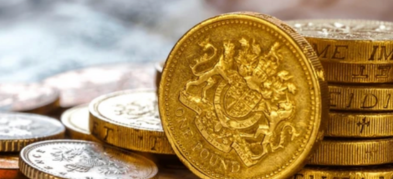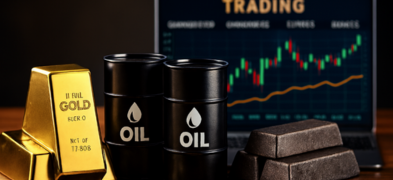Important Information
This website is managed by Ultima Markets’ international entities, and it’s important to emphasise that they are not subject to regulation by the FCA in the UK. Therefore, you must understand that you will not have the FCA’s protection when investing through this website – for example:
- You will not be guaranteed Negative Balance Protection
- You will not be protected by FCA’s leverage restrictions
- You will not have the right to settle disputes via the Financial Ombudsman Service (FOS)
- You will not be protected by Financial Services Compensation Scheme (FSCS)
- Any monies deposited will not be afforded the protection required under the FCA Client Assets Sourcebook. The level of protection for your funds will be determined by the regulations of the relevant local regulator.
Note: Ultima Markets is currently developing a dedicated website for UK clients and expects to onboard UK clients under FCA regulations in 2026.
If you would like to proceed and visit this website, you acknowledge and confirm the following:
- 1.The website is owned by Ultima Markets’ international entities and not by Ultima Markets UK Ltd, which is regulated by the FCA.
- 2.Ultima Markets Limited, or any of the Ultima Markets international entities, are neither based in the UK nor licensed by the FCA.
- 3.You are accessing the website at your own initiative and have not been solicited by Ultima Markets Limited in any way.
- 4.Investing through this website does not grant you the protections provided by the FCA.
- 5.Should you choose to invest through this website or with any of the international Ultima Markets entities, you will be subject to the rules and regulations of the relevant international regulatory authorities, not the FCA.
Ultima Markets wants to make it clear that we are duly licensed and authorised to offer the services and financial derivative products listed on our website. Individuals accessing this website and registering a trading account do so entirely of their own volition and without prior solicitation.
By confirming your decision to proceed with entering the website, you hereby affirm that this decision was solely initiated by you, and no solicitation has been made by any Ultima Markets entity.
I confirm my intention to proceed and enter this website Please direct me to the website operated by Ultima Markets , regulated by the FCA in the United KingdomWhat Is an Inverse Head and Shoulders Pattern?
The inverse head and shoulders is a bullish chart pattern that signals a potential reversal from a downtrend to an uptrend. It is the opposite of the classic head and shoulders pattern, which indicates a market top.
This pattern is popular among technical traders because it often precedes a significant upward price move. It forms after a prolonged downtrend and signals that the selling pressure is weakening, and buyers may be gaining control.
What Does the Inverse Head and Shoulders Pattern Look Like?

The pattern consists of three main parts:
- Left Shoulder: Price declines, then forms a temporary low before rising.
- Head: Price drops further, making a lower low.
- Right Shoulder: Price falls again but not as low as the head before moving higher.
A neckline is drawn by connecting the highs after the left shoulder and the head. A breakout above the neckline confirms the pattern.
Inverse Head and Shoulders Meaning for Traders
In simple terms, the inverse head and shoulders pattern represents a shift in market sentiment. Sellers are losing momentum, and buyers are stepping in with more strength. When price breaks above the neckline with volume, it often confirms a bullish trend reversal.
This pattern is widely used across markets including stocks, forex, and cryptocurrencies.
Inverse Head and Shoulders Pattern: Bullish or Bearish?
This pattern is bullish. Traders often use it to spot buying opportunities at the end of a downtrend. Once the neckline is broken, many see it as a signal to enter a long position, anticipating further price increases.
How to Measure an Inverse Head and Shoulders Pattern
To estimate the price target after a breakout:
- Measure the vertical distance from the lowest point of the head to the neckline.
- Add this distance to the breakout point above the neckline.
Example:
- Head low: $90
- Neckline: $100
- Distance: $10
- Breakout point: $100
- Target Price: $110
This gives traders an approximate idea of where price may move after the pattern is confirmed.
How to Identify an Inverse Head and Shoulders Pattern Breakout
A successful breakout usually includes:
- A decisive close above the neckline
- Increased volume on the breakout
- The price retesting the neckline as support before moving higher (optional)
Be cautious of false breakouts. Always confirm with volume or supporting indicators like RSI or MACD.
What Happens After an Inverse Head and Shoulders Pattern?
After confirmation, the market often begins a new uptrend. Traders look for:
Inverse Head and Shoulders Stock Pattern
- Continued higher highs and higher lows
- Support levels holding above the neckline
- Opportunities to scale into long positions
This pattern appears frequently in stocks, especially near market bottoms. Many traders use it to identify potential turnaround opportunities in individual equities.
Popular stocks like Apple, Tesla, and Amazon have all formed inverse head and shoulders patterns during market corrections before rallying.
Inverse Head and Shoulders Strategy: Tips for Traders
- Combine the pattern with momentum indicators for confirmation.
- Watch for volume spikes on the breakout.
- Use stop-loss orders below the right shoulder to manage risk.
- Target price = Neckline breakout + distance from head to neckline.
- Look for multi-timeframe confluence—confirmation on both hourly and daily charts increases reliability.
Inverse Head and Shoulders vs Head and Shoulders
| Feature | Inverse Head and Shoulders | Head and Shoulders |
| Trend Direction | Reversal to bullish | Reversal to bearish |
| Occurs After | Downtrend | Uptrend |
| Entry Signal | Breakout above neckline | Breakout below neckline |
| Trader Bias | Long positions | Short positions |
Conclusion
The inverse head and shoulders pattern is a powerful tool for identifying bullish reversals. When confirmed with volume and additional indicators, it offers traders a high-probability entry into a new uptrend.
Whether you’re trading stocks, forex, or crypto, recognizing this pattern can help you make smarter, more confident decisions.
If you’re a beginner or an experienced trader looking to improve your strategy, consider trading with Ultima Markets. Our platform offers access to powerful charting tools, technical analysis resources, and real-time data to help you spot patterns like the inverse head and shoulders with confidence.
Disclaimer: This content is provided for informational purposes only and does not constitute, and should not be construed as, financial, investment, or other professional advice. No statement or opinion contained here in should be considered a recommendation by Ultima Markets or the author regarding any specific investment product, strategy, or transaction. Readers are advised not to rely solely on this material when making investment decisions and should seek independent advice where appropriate.












